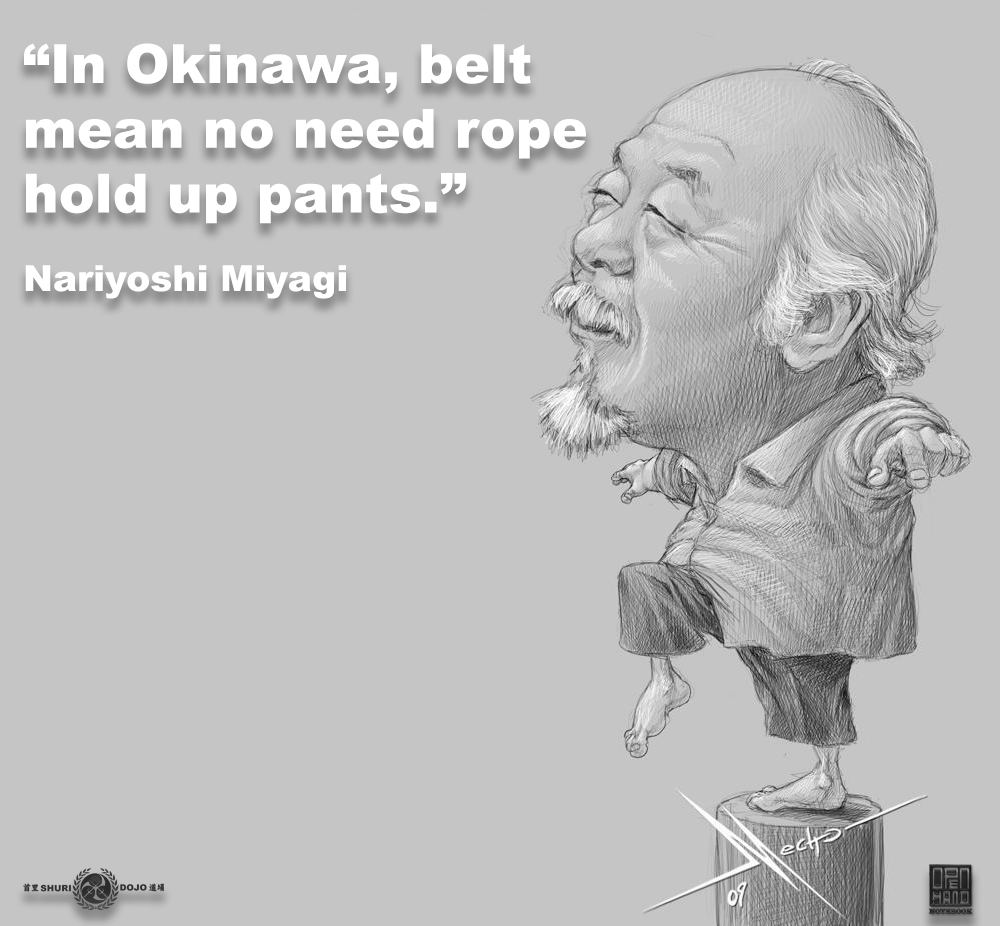
Modern-day students of karate generally assume that the ranking system of kyu (color belt) and dan (black belt) levels, and the various titles that high-ranking black belts hold, are, like the kata, a part of karate tradition extending back centuries.
.
However, the ranking system itself dates back only to the early 20th century.
.
Japanese culture tends to be highly regimented and structured. Virtually any traditional art that you might wish to study in Japan, from flower arranging (ikebana) to calligraphy (shodo), comes with its own progressive series of formal ranks. And so, it is with the martial arts.
.
In 1924 Gichin Funakoshi, founder of Shotokan Karate, adopted the Dan system from Judo founder Jigoro Kano, using a rank system with a limited set of belt colors. Kano himself adopted the Dan ranking system, which was invented by Honinbo Dosaku a professional ‘Go’ (Japanese board game) player in the Edo period. Dosaku valued the then highest title holder, ‘Meijin’ (Master) at 9th Dan.
.
Karate, however, is of Okinawan origin rather than Japanese. Karate in Okinawa was passed on privately within families, from father to son, and was taught to members of the aristocracy, the police…… Funakoshi himself was a schoolteacher.
.
In Okinawa during Japanese occupation the teaching of martial skills was prohibited, therefore the training was carried out in secret, after dark, in enclosed private courtyards. Masters would select only a few students to teach and charged no fee. A
student’s progress was measured not by rank, or belt, but by how many years he had studied, how much he had learned, and how well his character had developed.
.
In 1938 the Japanese Butoku-kai called upon all existing karate schools and styles to register for official sanctioning, and an important meeting was called for the purpose of standardizing rank requirements (something that had never been done!).
.
World War II caused a major disruption to the Japanese and Okinawan martial arts. Many masters had died during the war, and the practice of martial arts was forbidden for a time by the American occupying forces, and the Butoku-kai was shut down.
.
Each school was on its own, and the surviving leaders had to begin anew. In Okinawa the kyu/dan system was not yet well established, although some systems utilized at least the black belt. Following the war, it finally became more widely accepted, leaving the problem of developing new sanctioning bodies to legitimize the ranks being awarded.
.
Today, martial arts traditions vary and there’s no universal structure for all martial arts. Different styles, different schools, different teachers within the same style, might have different ranks. Rank can be seen as important in the standardization of requirements which helps to maintain the integrity and value of systems based on tradition.
.
However, a grade or belt is an agreement between you and an instructor, or organization, that you represent what they teach, and should be an indicator of your knowledge and dedication to that particular style, or group. Nothing more.
.
Within every rank there can be found a wide range of students whose skills vary dramatically. Your rank is indicative of you being better and more knowledgeable than you were at a previous rank and not comparable with anyone else.
.
Finally, it is wise to acknowledge that achievement of rank should be considered as a side-effect of karate training and not a goal. Personally, for me, it’s the recognition by the individual awarding the belt or title that matters.![]()
![]()
.
.
